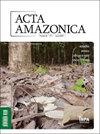亚马逊稀树草原绿玉米与早熟禾科间作的植物技术性能及对叶足虫的抗性
IF 0.8
4区 环境科学与生态学
Q4 ECOLOGY
引用次数: 0
摘要
摘要绿玉米具有巨大的经济价值,消费市场越来越需要生产不受虫害破坏的新鲜食用玉米穗。本研究的目的是评估AG1051绿玉米和Roraima玉米(人种品种Milhão)在亚马逊大草原环境中与矮粒高粱、饲料高粱和小米间作的性能。我们评估了玉米的植物技术特征和叶足虫(Leptoglossus zonatus)的危害。该实验是在2×4因子随机区组设计中进行的,有四个重复,其中两个玉米品种对应于第一个因子,四个间作系统对应于第二个因子。关于营养和生殖成分,Milhão比AG1051有更长的周期、更大的植物生长和更小的茎径,导致植物倒伏。间作系统对所研究的任何品种的玉米穗产量或质量都没有影响。Milhão与AG1051杂交种在任何穗部质量变量(穗部长度、每穗粒数、玉米芯直径、穗部重量和穗部总数)方面都没有差异。AG1051品种是带状乳杆菌的首选品种,但商品穗产量最高。间作系统对叶足虫的危害没有影响。本文章由计算机程序翻译,如有差异,请以英文原文为准。
Phytotechnical performance and resistance to leaf-footed bugs of green maize intercropped with Poaceae in the Amazon savannah
ABSTRACT Green maize has great economic value, and the consumer market increasingly demands the production of ears for fresh consumption that are free from damage by pest attacks. The aim of this study was to evaluate the performance of varieties of AG1051 green maize and Roraima maize (ethnovariety Milhão) intercropped with dwarf grain sorghum, forage sorghum and millet in an environment of the Amazon savannah. We evaluated phytotechnical characteristics of the maize and damage from the leaf-footed bug (Leptoglossus zonatus). The experiment was set up in a 2 x 4 factorial randomised block design with four replications, where the two maize varieties corresponded to the first factor and four intercropping systems to the second factor. Regarding vegetative and reproductive components, Milhão had a longer cycle, greater plant growth and smaller stem diameter than AG1051, causing plant lodging. The intercropping systems had no influence on the production or quality of maize ears for any of the cultivars under study. Milhão did not differ from the AG1051 hybrid in any ear quality variable (ear length, number of grains per ear, cob diameter, ear weight and total number of ears). The AG1051 cultivar was preferred by L. zonatus, but had the highest yield of commercial ears. The intercropping systems had no influence on the damage caused by the leaf-footed bug.
求助全文
通过发布文献求助,成功后即可免费获取论文全文。
去求助
来源期刊

Acta Amazonica
PLANT SCIENCESECOLOGYZOO-ECOLOGY
CiteScore
1.70
自引率
0.00%
发文量
34
审稿时长
22 weeks
期刊介绍:
Acta Amzonica is a multidisciplinary, peer-reviewed, open access, free-of-charge scientific journal for research in and about the Amazon region, published since 1971 by the Instituto Nacional de Pesquisas da Amazônia - INPA, in Brazil.
The journal publishes quarterly issues containing articles and short communications in English across a broad range of disciplines, including Agronomy and Forestry, Animal Sciences and Fisheries, Biodiversity and Conservation, Biotechnology, Chemistry and Pharmacology, Environmental Sciences, Food Sciences, Geosciences, Health Sciences, Human and Social Sciences, and Materials Technology.
 求助内容:
求助内容: 应助结果提醒方式:
应助结果提醒方式:


